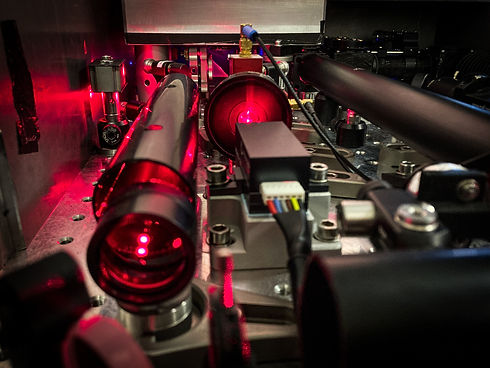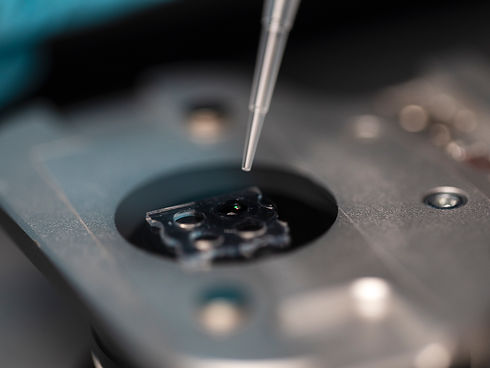Reimagining how we study biomolecules
Research
The general paradigm in the Kukura group is to implement and use advances in optics and spectroscopy to enable the observation, study and quantification of phenomena that have been thought, or even accepted, to be 'invisible'. We have found that such advances are necessarily team-oriented, interdisciplinary and collaborative, all of which we foster in our projects and studies.
We are fortunate to be supported by the ERC, EPSRC, the Wellcome Leap and the Emerson Collective
OPTICS
In terms of technology development, our focus is firmly in the space of optical microscopy where we look for new ways to extract information from the tiniest signals we get from single molecules. To do this, we predominantly build new microscopes - rethinking how we shine light on a sample and how we detect it, and doing everything we can to eliminate the (many!) noise sources that mask the signals we are after.


ANALYSIS
New hardware can only help to a certain degree. Signals from single molecules are likely to always be faint and subject to measurement noise, so developing new algorithms and approaches that enable us to maximise the signals we are after is essential to realise the capabilities enabled by our hardware development. This includes image processing and new ways to analyse and average single molecule data.
ASSAYS
Everything we do is ultimately aimed at improving the measurement and characterisation of biological systems. This means that whatever we develop has to be robust and broadly applicable, while providing information that cannot be obtained by other methods. Examples include enabling measurements in and on membranes, and extended observations of single complexes and their dynamics.


SYSTEMS
The universality of mass photometry makes it in principle applicable to almost any biomolecular question. Our current focus is protein-protein interactions and the associated dynamics: how are macromolecular complexes formed, how are the dynamics of these complexes associated with function and regulation, and how do these principles connect to health and disease?
